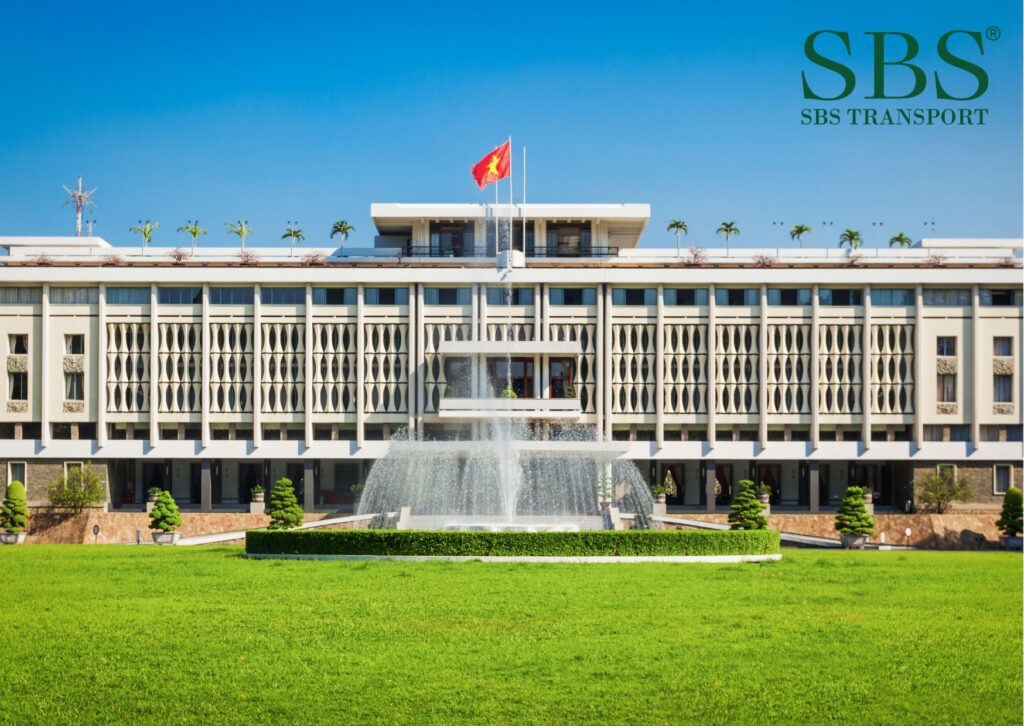The Lantern Festival, or Tết Nguyên Tiêu, is an important full moon festival in East Asian culture, symbolizing peace, good fortune, and family reunion. When does the Lantern Festival 2025 fall? What unique traditional customs are still practiced today? Join SBS Transport in exploring this special occasion in our article below!
What is the Lantern Festival?
The Lantern Festival, known as Tết Nguyên Tiêu or Rằm tháng Giêng in Vietnamese, is a significant lunar holiday in East Asian traditions. It takes place on the 15th day of the first lunar month and is considered the first full moon night of the new year. Beyond being a religious observance, the Lantern Festival carries deep cultural, community, and family significance.
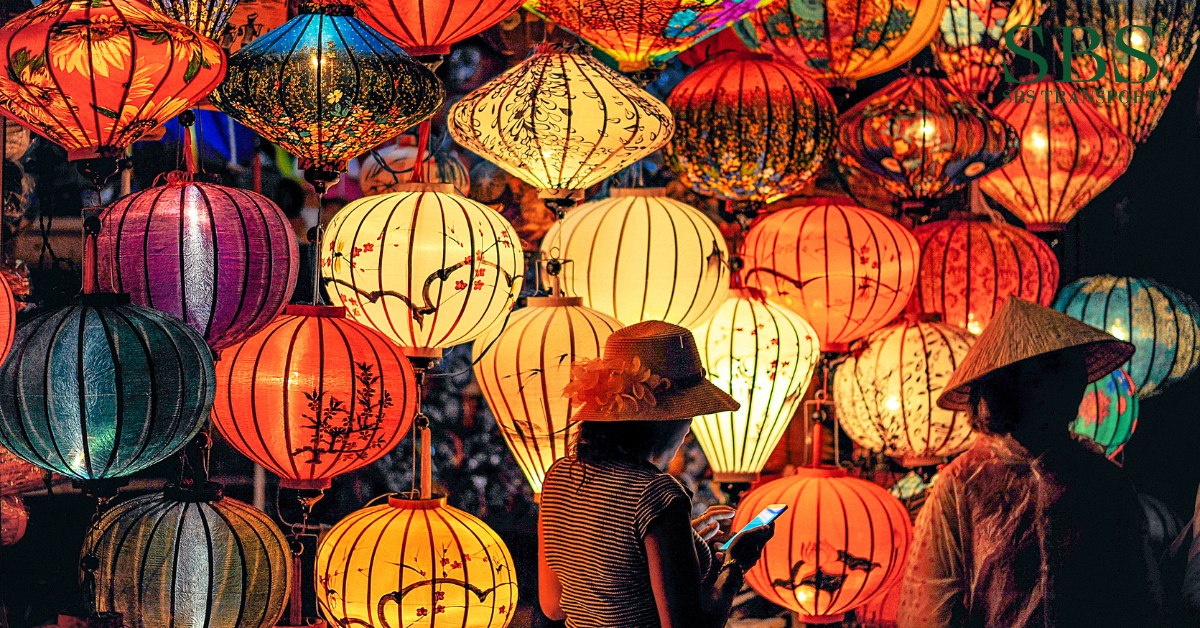
The Meaning Behind the Name “Tết Nguyên Tiêu”
The name “Tết Nguyên Tiêu” originates from Chinese characters:
- “Nguyên” (元) means “first” or “beginning.”
- “Tiêu” (宵) means “night.”
Thus, “Nguyên Tiêu” refers to the first full moon night of the year, marking the completion of the lunar cycle after the Lunar New Year.
In Vietnam, the festival is also called Rằm tháng Giêng or Tết Thượng Nguyên. It is one of the three major full moon days in Vietnamese spiritual beliefs:
- Thuong Nguyen Festival (Rằm tháng Giêng): A time to pray for peace and blessings for the whole year.
- Trung Nguyen Festival (Rằm tháng Bảy – Vu Lan): Honoring ancestors and praying for wandering souls.
- Ha Nguyen Festival (Rằm tháng Mười): Marking the end of the harvest season and expressing gratitude to deities.
With the belief that “Worshiping throughout the year is not as meaningful as worshiping on the full moon of the first month,” Vietnamese people regard this occasion as a time to offer gratitude, seek blessings, and ward off misfortune for the new year.
Is the Lantern Festival a Buddhist Holiday?
Although closely associated with Buddhist traditions, the Lantern Festival is not exclusively a Buddhist celebration. In addition to visiting pagodas for peace prayers, many people perform ancestral worship rituals at home.
In some regions, the Lantern Festival is a major cultural event for the Chinese community, especially in places like Chợ Lớn (Ho Chi Minh City), Hội An (Quảng Nam), and Hanoi.
Origins and Significance of the Lantern Festival
2.1. The Origins of the Lantern Festival
The Lantern Festival dates back thousands of years to the Western Han Dynasty (206 BC – 220 AD) in China. Several legends explain its origins, including:
The Legend of Emperor Han Wen Di
Historical records suggest that Emperor Han Wen Di (179 – 157 BC) designated the 15th day of the first lunar month as a national peace and prosperity festival. Over time, traditions such as lantern processions and candle lighting became popular customs.
The Legend of the Jade Emperor and the Celestial Bird
Another legend tells of a celestial bird that was accidentally killed by villagers. Enraged, the Jade Emperor ordered the destruction of the human world on the 15th day of the first lunar month. A kind-hearted deity advised the villagers to light red lanterns, set off fireworks, and host lively celebrations to trick the Jade Emperor into believing that the world was already ablaze. The ruse worked, and the disaster was averted.
From then on, people continued the tradition of lantern festivals and fireworks on this day.
2.2. The Significance of the Lantern Festival
Spiritual Significance
The Lantern Festival is believed to be a time when people connect with deities and ancestors. It is thought that gods descend to bless humanity, making prayers and offerings during this period especially auspicious.
Cultural and Family Significance
Beyond religious customs, the Lantern Festival is a time for family reunions. Families gather to prepare offerings, share meals, and participate in traditional activities, reinforcing bonds between generations.
Community Significance
In areas with large Chinese communities, the Lantern Festival is celebrated with grand parades, lion dances, dragon dances, and artistic performances. These activities not only create a festive atmosphere but also help preserve and promote traditional cultural values.
When is the Lantern Festival 2025?
According to the lunar calendar, the Lantern Festival always falls on the 15th day of the first lunar month.
In 2025, the Lantern Festival will take place on Wednesday, February 12 (Gregorian calendar).
This is a time when the festive spirit of the Lunar New Year still lingers, and many people take this last opportunity to complete new year prayers before resuming their regular routines.
Traditional Customs of the Lantern Festival
The Lantern Festival is not just a spiritual event—it is also associated with vibrant traditions passed down through generations. Below are some of the most common customs:
Ancestral Worship and Offerings
Like other full moon days, the Lantern Festival is a time for families to prepare offerings for their ancestors, expressing respect and seeking blessings.
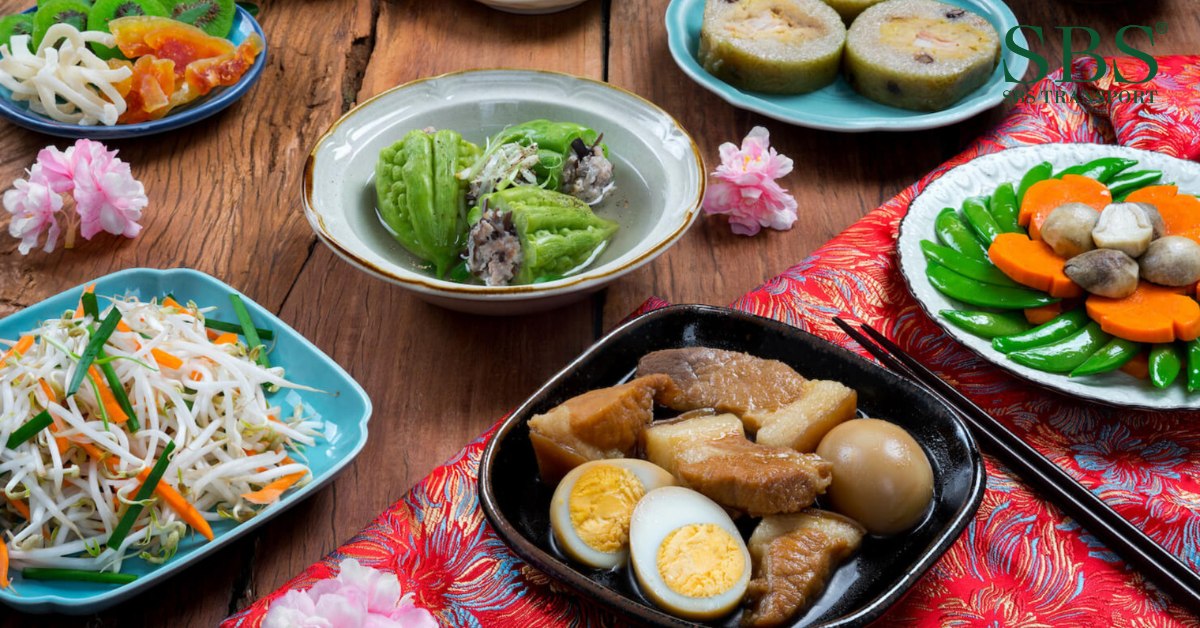
Typical Offerings for the Lantern Festival
Offerings vary by region but commonly include:
- Vegetarian offerings: Sticky rice, sweet soup (chè), rice balls, and fresh fruits.
- Meat-based offerings: Boiled chicken, spring rolls, steamed sticky rice, and traditional Vietnamese Tet dishes.
- Five-fruit tray: Representing the five elements and prosperity (e.g., custard apple, coconut, papaya, mango, and figs in the South; banana, pomelo, orange, dragon fruit, and persimmon in the North).
Many families also participate in star-lantern rituals to dispel misfortune and attract good fortune.
Visiting Pagodas for Blessings
Many Vietnamese believe that visiting pagodas on the full moon of the first month brings spiritual purification and positive energy for the new year.
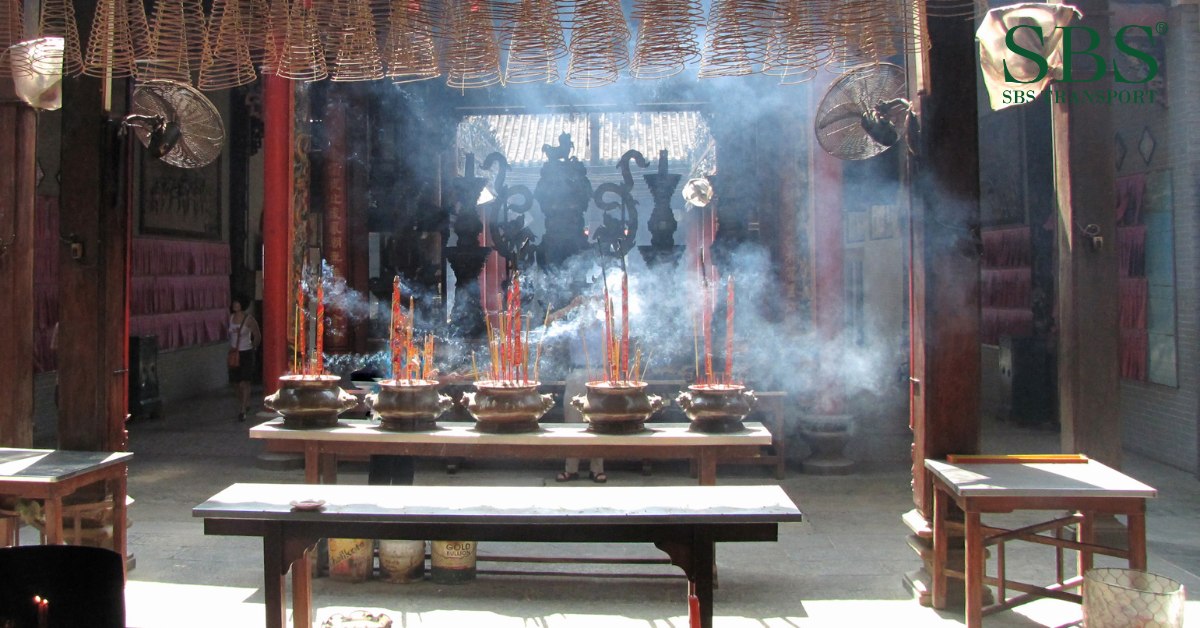
Common pagoda rituals include:
- Offering incense and vegetarian food to express sincerity.
- Praying for family well-being and success.
- Releasing animals (such as fish or birds) as an act of compassion.
Some pagodas also hold “star-dispelling” ceremonies to help individuals avoid bad luck in the upcoming year.
Floating Lanterns on Water
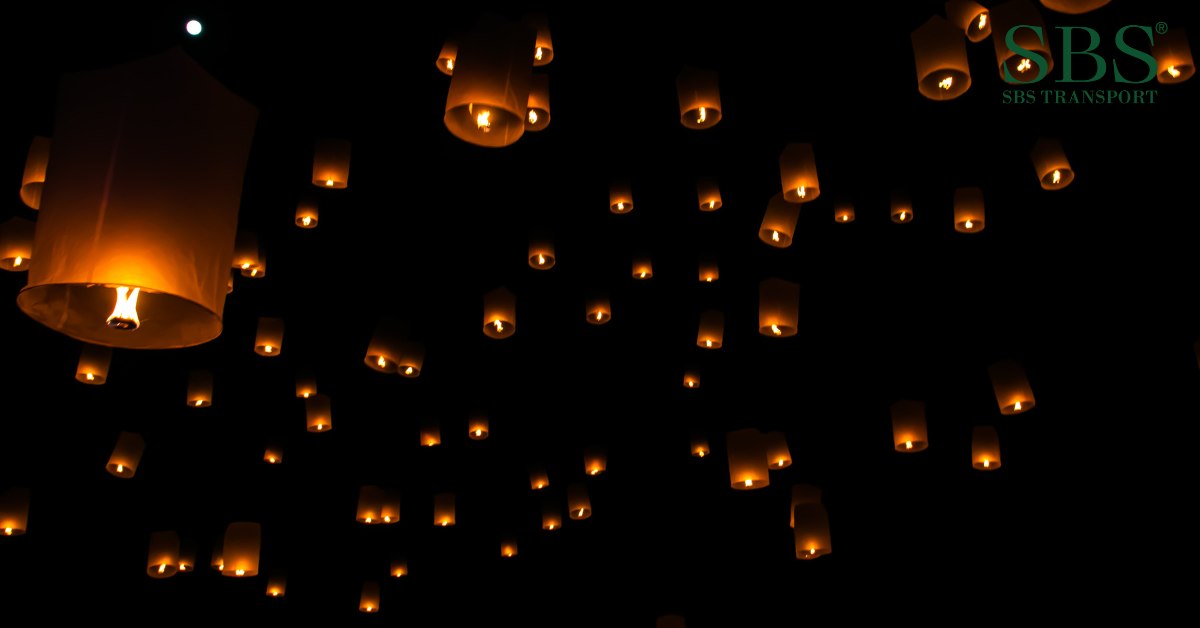
Releasing water lanterns into rivers and lakes is a tradition that symbolizes:
- Sending wishes and prayers to the heavens.
- Warding off misfortune and welcoming prosperity.
- Creating a stunning visual spectacle on the night of the full moon.
In cities like Hội An, Ho Chi Minh City, and Huế, this activity attracts many locals and tourists.
Lantern Parades and Lion-Dragon Dances
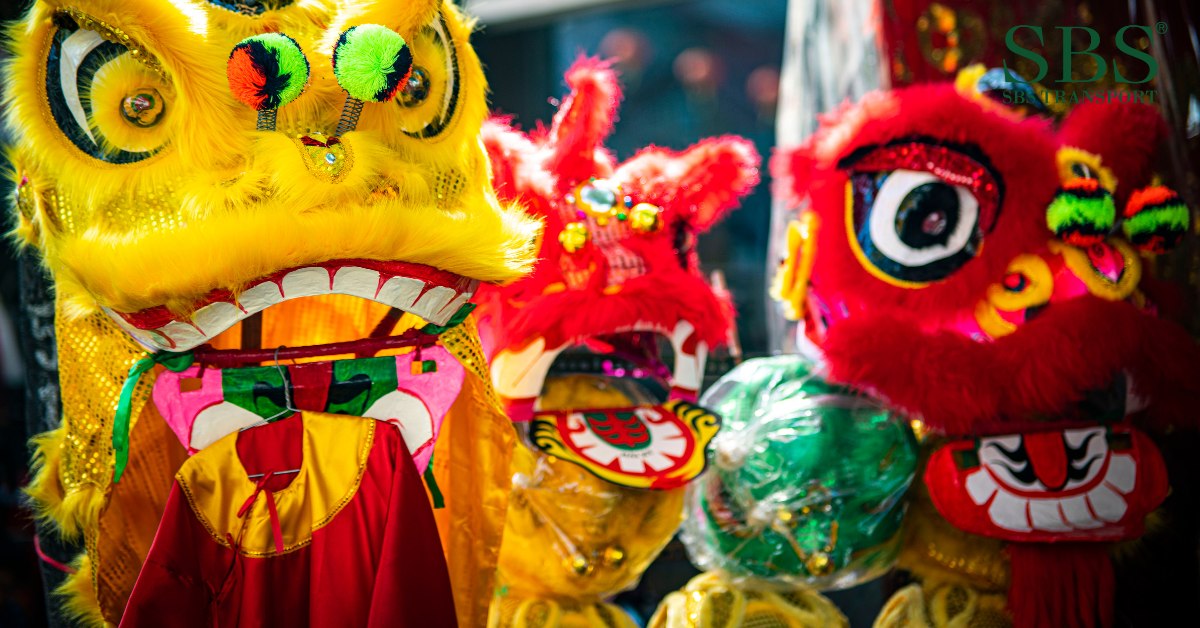
This custom is particularly popular in Chinese communities, especially in Chợ Lớn (Ho Chi Minh City), Hội An, and Hanoi. The streets come alive with vibrant lantern parades, dragon and lion dances, creating a joyful festive atmosphere.
Lion and dragon dances during the Lantern Festival are believed to bring prosperity and protection from evil spirits. Performances often take place in temples, major streets, and cultural centers, drawing large crowds.
SBS Transport: Your Companion During the Lantern Festival
As a trusted transportation brand, SBS Transport ensures safe and convenient travel for all your Lantern Festival journeys.
With increased travel demand to pagodas and cultural sites during this period, SBS Transport will enhance its services, offering reliable transportation for those who wish to experience this special festival without hassle.
Conclusion
The Lantern Festival is not just a spiritual event—it is a cherished cultural tradition that connects people to their roots, strengthens family ties, and preserves valuable heritage.
Whether you participate in religious rituals or simply enjoy the festive atmosphere, this is a memorable time of the year.
With SBS Transport, your Lantern Festival travels will be safe, seamless, and enjoyable! 🎉



